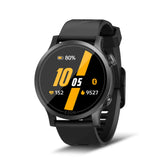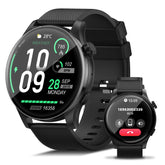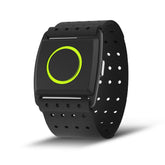The Science Behind Calorie Burn During Exercise
Understanding how calorie burn works during exercise is essential for anyone looking to optimize their fitness routine, manage weight, or improve overall health. The number of calories burned during physical activity is influenced by a variety of factors, including the type of exercise, its intensity, and individual characteristics such as body composition and metabolism. In this article, we will explore the science behind calorie burn, how different exercises impact calorie expenditure, and the role of technology, such as a calories burned calculator and calorie counter watch, in tracking and optimizing your results.
What Are Calories?
Calories are a unit of energy that measure the amount of energy food provides to the body. When you consume calories, your body uses them for essential functions like breathing, digestion, and physical activity. The balance between the calories consumed through food and those burned through activity determines your body weight over time.
Factors Influencing Calorie Burn
Several factors contribute to the total number of calories burned during exercise:
1. Type of Exercise
Different exercises burn calories at different rates. Here are some common activities and their approximate calorie burn per hour for a 155-pound individual:
- Running (6 mph): Approximately 660 calories
- Cycling (12-14 mph): Approximately 600 calories
- Swimming (moderate effort): Approximately 500 calories
- Weightlifting: Approximately 220 calories
- Yoga: Approximately 200 calories
High-intensity and aerobic exercises generally burn more calories than lower-intensity activities.
2. Exercise Intensity
The intensity of your workout significantly impacts the number of calories burned. Higher-intensity workouts elevate your heart rate and increase energy expenditure. For example:
- Low-Intensity Steady State (LISS): Activities like walking or light cycling typically burn fewer calories per minute compared to moderate or high-intensity workouts.
- High-Intensity Interval Training (HIIT): This training method alternates between intense bursts of activity and rest, leading to increased calorie burn during and after the workout due to the afterburn effect (excess post-exercise oxygen consumption, or EPOC).
3. Duration of Exercise
The longer you exercise, the more calories you burn. However, the relationship between duration and calorie burn is not linear; as you become fatigued, your intensity may decrease, leading to a reduced calorie burn rate.
4. Body Composition
Muscle mass plays a crucial role in calorie expenditure. Muscle tissue burns more calories at rest compared to fat tissue. Therefore, individuals with higher muscle mass will generally have a higher basal metabolic rate (BMR), leading to increased calorie burn during both rest and exercise.
5. Age and Gender
Age and gender also affect calorie burn. Generally, younger individuals tend to have higher metabolic rates. Men often have a higher metabolic rate than women due to greater muscle mass, impacting total calorie expenditure.
Tracking Calorie Burn
With advancements in technology, tracking calorie burn has become easier and more accurate. Here are two effective tools to consider:
1. Calories Burned Calculator
A calories burned calculator can help estimate how many calories you burn during various activities based on your weight, duration of exercise, and intensity level. These calculators can provide personalized insights and assist in setting realistic fitness goals.
2. Calorie Counter Watch
A calorie counter watch tracks your heart rate, steps, and calories burned throughout the day. Many models also offer features such as:
- Activity Tracking: Monitor your daily movements and workouts to see how they contribute to total calorie expenditure.
- Heart Rate Monitoring: Understanding your heart rate during different activities helps gauge exercise intensity and optimize calorie burn.
- Integration with Apps: Syncing with fitness apps allows for more detailed tracking of nutrition and exercise, providing a holistic view of your fitness journey.
Conclusion
Understanding the science behind calorie burn during exercise empowers you to make informed decisions about your fitness routine. By recognizing how different exercises, intensities, and personal factors influence calorie expenditure, you can tailor your workouts to achieve your weight management and fitness goals. Utilizing technology, such as a calories burned calculator and calorie counter watch, can enhance your ability to track progress and stay motivated. Embrace the journey of fitness, and let the science of calorie burn guide you toward success!









